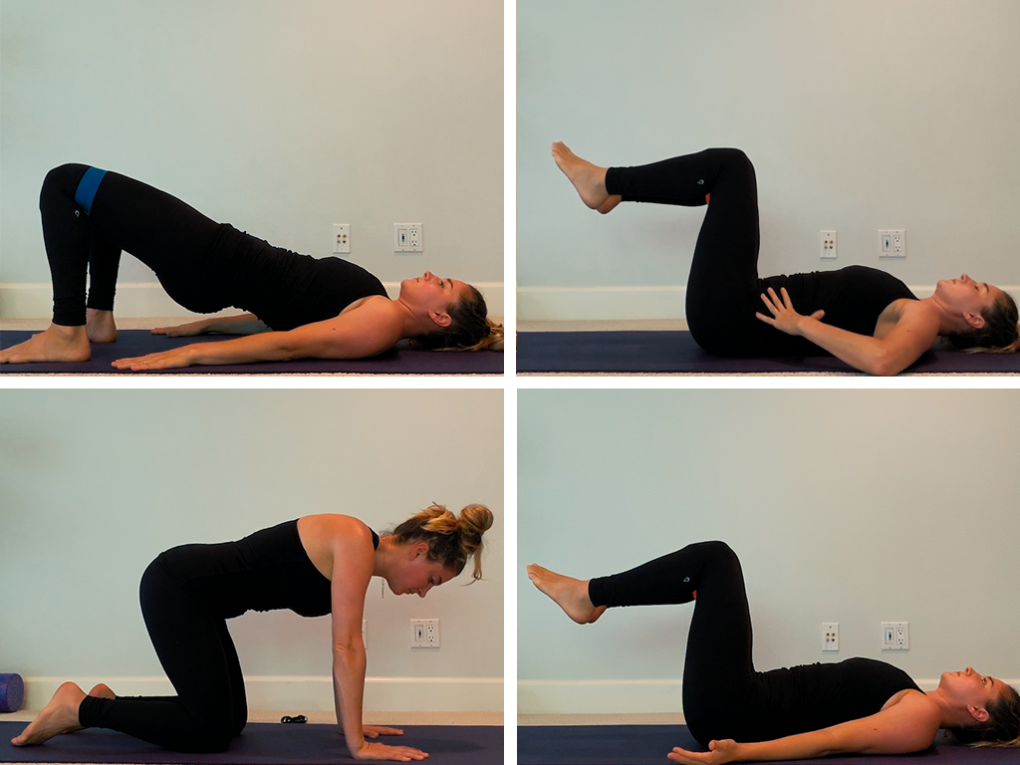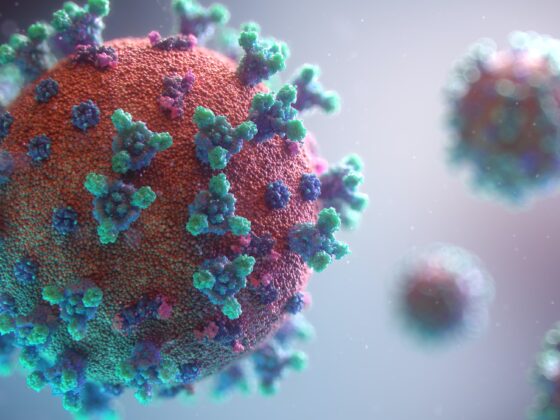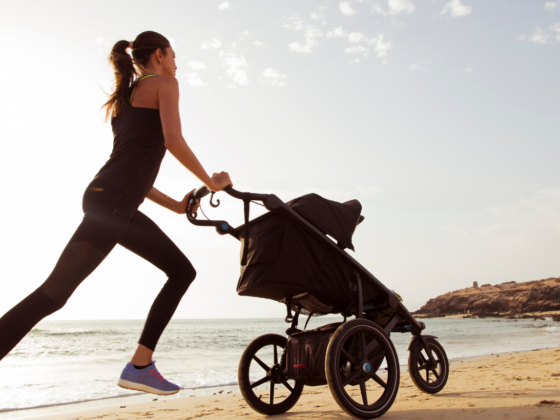In this post we will cover 5 exercises for diastasis recti, go over the basics for diastasis recti, as well as provide insight into the Mom Pooch, coning/doming and more.

What is Diastasis Recti?
Diastasis recti is the separation of the abdominis rectus (a.k.a. your “six pack”) due to the weakening of the central abdominal wall (Linea Alba). Minor diastasis recti is completely normal during pregnancy and is a part of your body’s natural adaptation as baby grows and develops. Pregnancy hormones weaken the central abdominal wall to allow room for baby’s growth.
As baby grows, minor separation and stretching of the abdominis rectus occur. In cases of minor diastasis recti, the abdominal wall should naturally regain its original strength between 4-6 weeks after delivery, pulling the two halves of the abdominis rectus back together.
However, mild to severe cases of diastasis recti over-stretch or damage the abdominal wall. In these cases, the abdominal wall is unable to regain its original strength, and the abdominis rectus remains separated.
How do I know if I have Diastasis Recti?
Mild to severe cases of diastasis recti are not normal during pregnancy, but they are also not uncommon. 30% of women will suffer from a mild form of diastasis following their first pregnancy, and the likelihood of developing diastasis recti increase during subsequent pregnancies.
One easy way to tell if you have a mild to severe case of diastasis recti is if a sizable “pooch” starts to form on your stomach. This pooch is known as “coning” (also called “doming”) but is also often referred to as “Mom Pooch”.
Coning and/or Doming
Coning/doming occurs when the increased intra-abdominal pressure from baby’s growth pushes the internal organs against the weakened abdominal wall. In the case of mild to severe diastasis recti, the increased pressure will cause a “pooch” to form on top of the abdominal wall. This “coning” or “doming” is almost always a sure sign that you have mild to severe diastasis recti.
If you suspect that you have a mild to severe case of diastasis recti, we have outlined an easy method to self-diagnose if you have diastasis recti that you can perform within the comfort of your own home.
5 Exercises For Diastasis Recti
- Reverse Tabletop March- Make sure that your core is engaged and pelvis is in neutral position. You can start with just tapping your feet, when you have that down then start using your arms. If you lose the core connection stop the movement, recompose and start again.
- Toe Taps – I use a ball here to make sure that I’m squeezing my legs together and engaging everything. You can start with single leg taps, then progress onto double taps.
- Birddog – Engage your car and with each breath extend your opposite arm and leg. To start, you can reach one hand, then the next hand, then one leg, then the other leg. Then progress to the more challenging exercise.
- Hip Thrusts – This is just an all around awesome exercise for rebuilding the strength in your core. Start without a band and build up to the band.
- Hands and knees deep breathing – You need to practice this to make sure you are connecting your pelvic floor and TVA. With each exhale pull pelvic floor in an up.
View this post on Instagram
The Don’ts
- Core exercises that exert extra intra-abdominal pressure on your abdominis rectus, such as crunches, abdominal stretching, and twists, tear your abdominis rectus further apart. These exercises must be absolutely avoided as they will further damage your abdominal wall and abdominis rectus and worsen your diastasis recti. We have made a list below of some of the most common exercises to avoid during your healing process:
- Crunching
- Twisting your torso, such as oblique twists
- Exercises that require stretching on a yoga ball
- Yoga exercises that stretch the abdominis rectus, such as “upward dog” and “snake pose”
- Leg extensions that engage the abdominis rectus
- In summary, avoid any exercise that engages or stretches your “six pack.” These will further damage your diastasis recti. Consult your doctor before you begin any exercise.
The Do’s
- Core exercises that engage your obliques, transverse abdominis, and pelvic floor build strength to support your healing abdominis rectus. Light forms of exercise that engage these muscles are encouraged to help aid in your healing process.
- Juna’s 6 Core Restore program is a perfect start to getting the core function you need
*We always recommend that you consult your doctor prior to doing anything.










